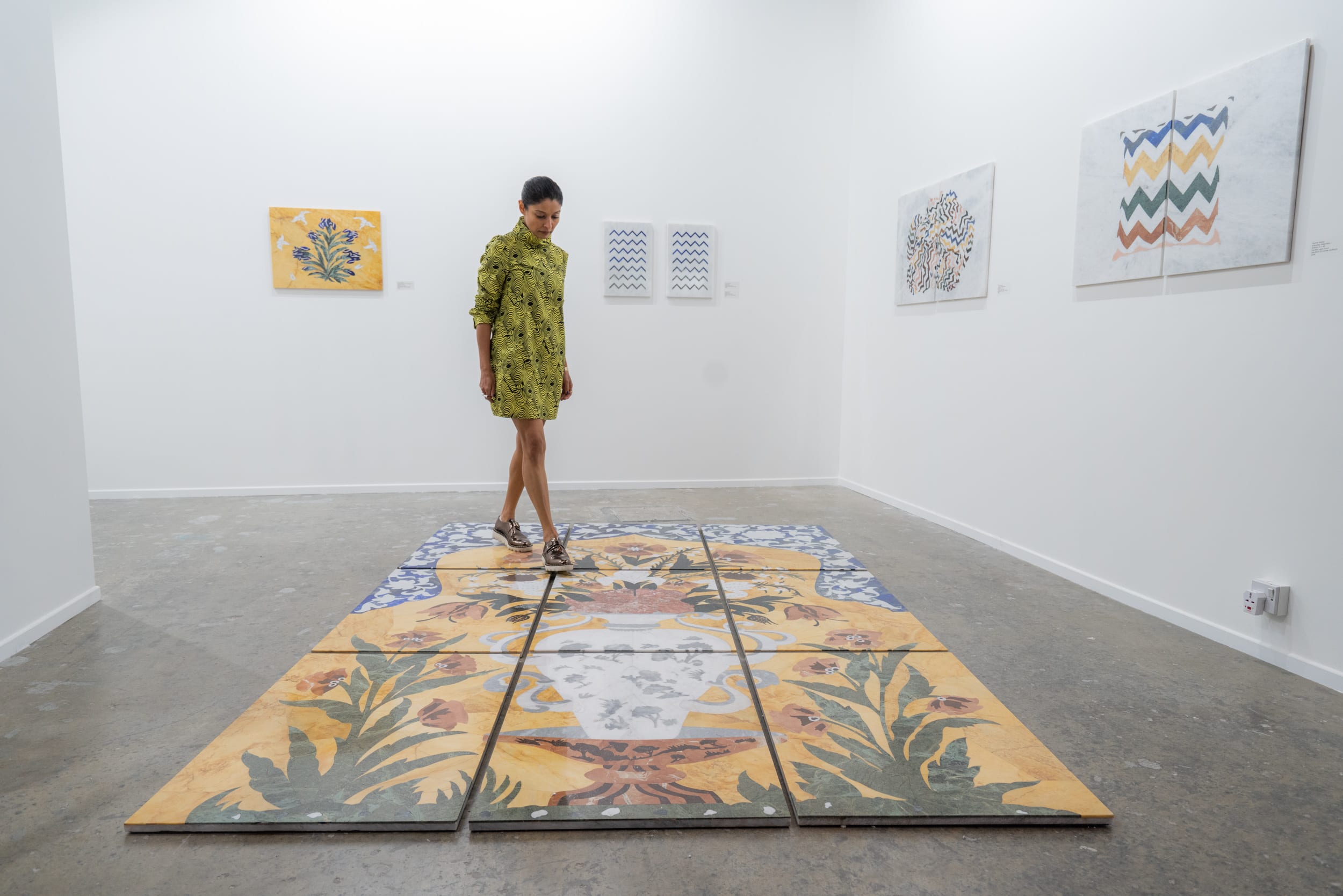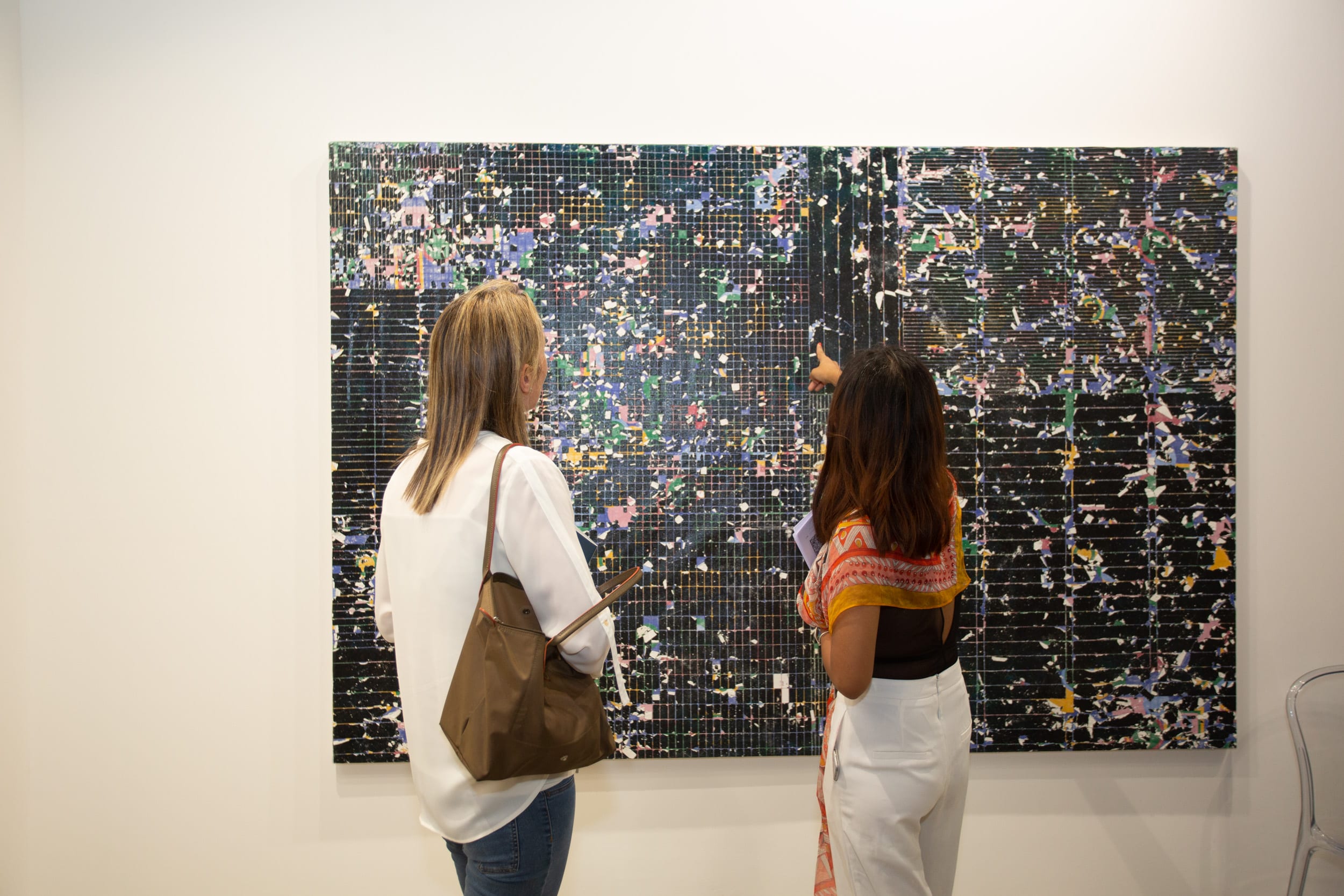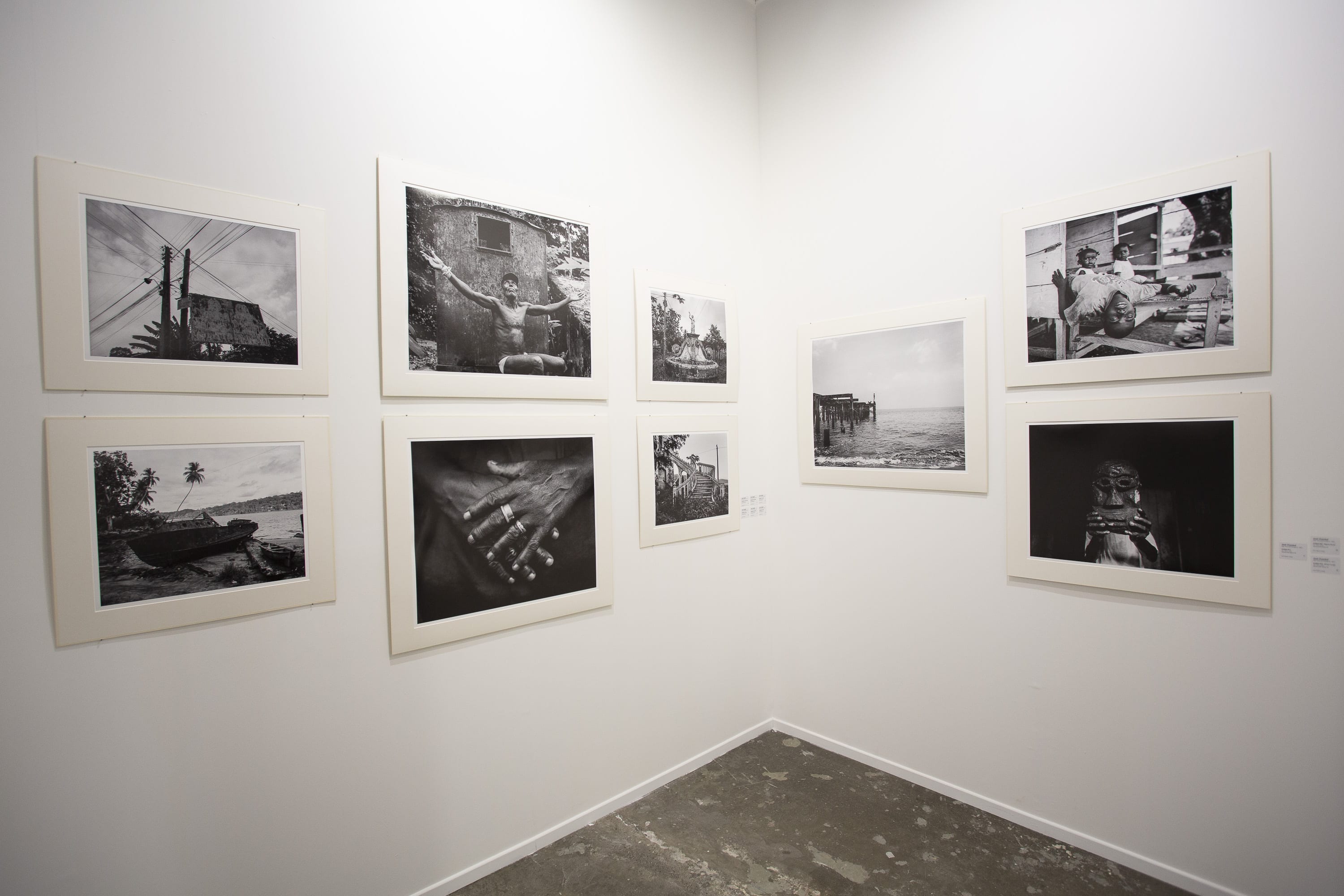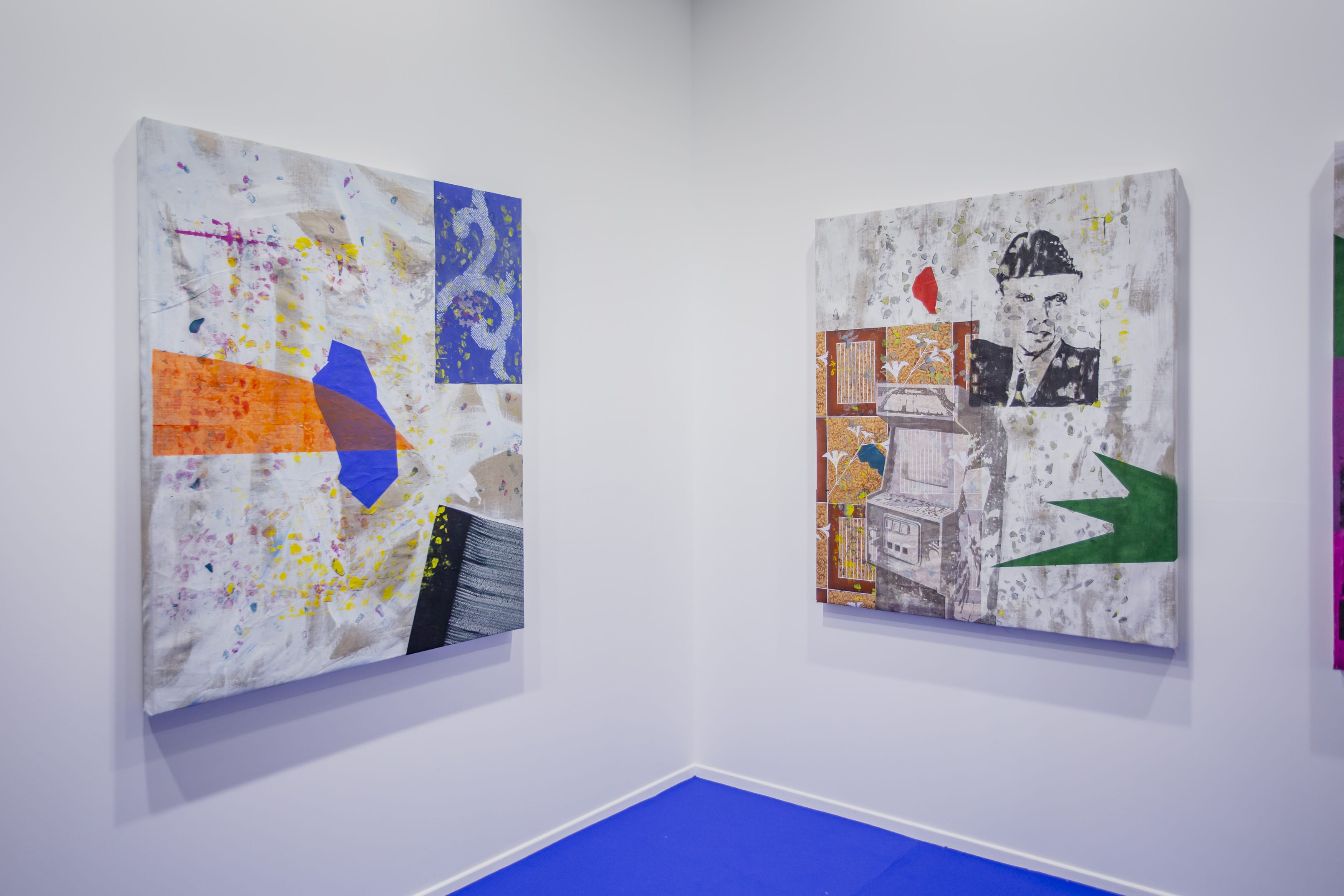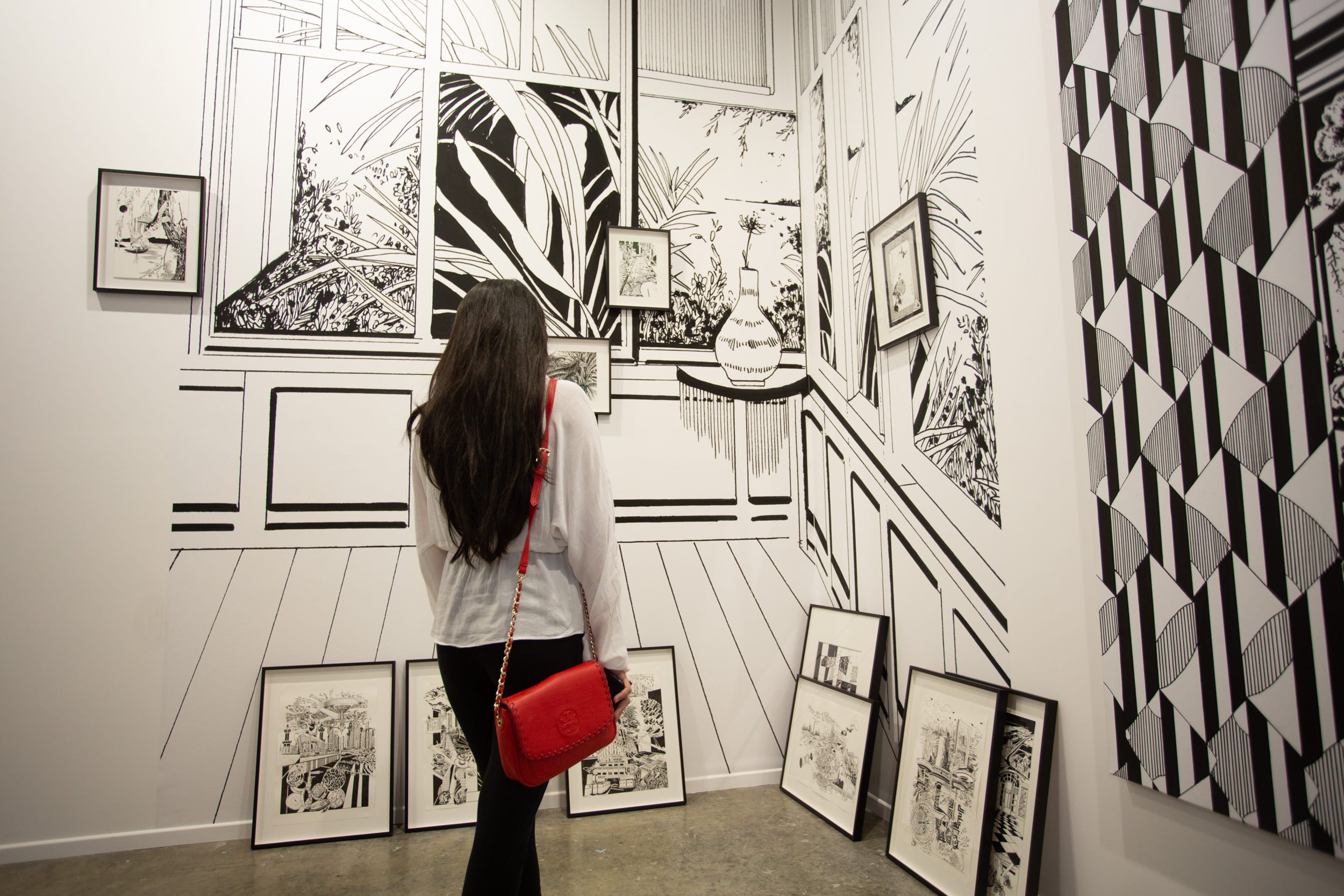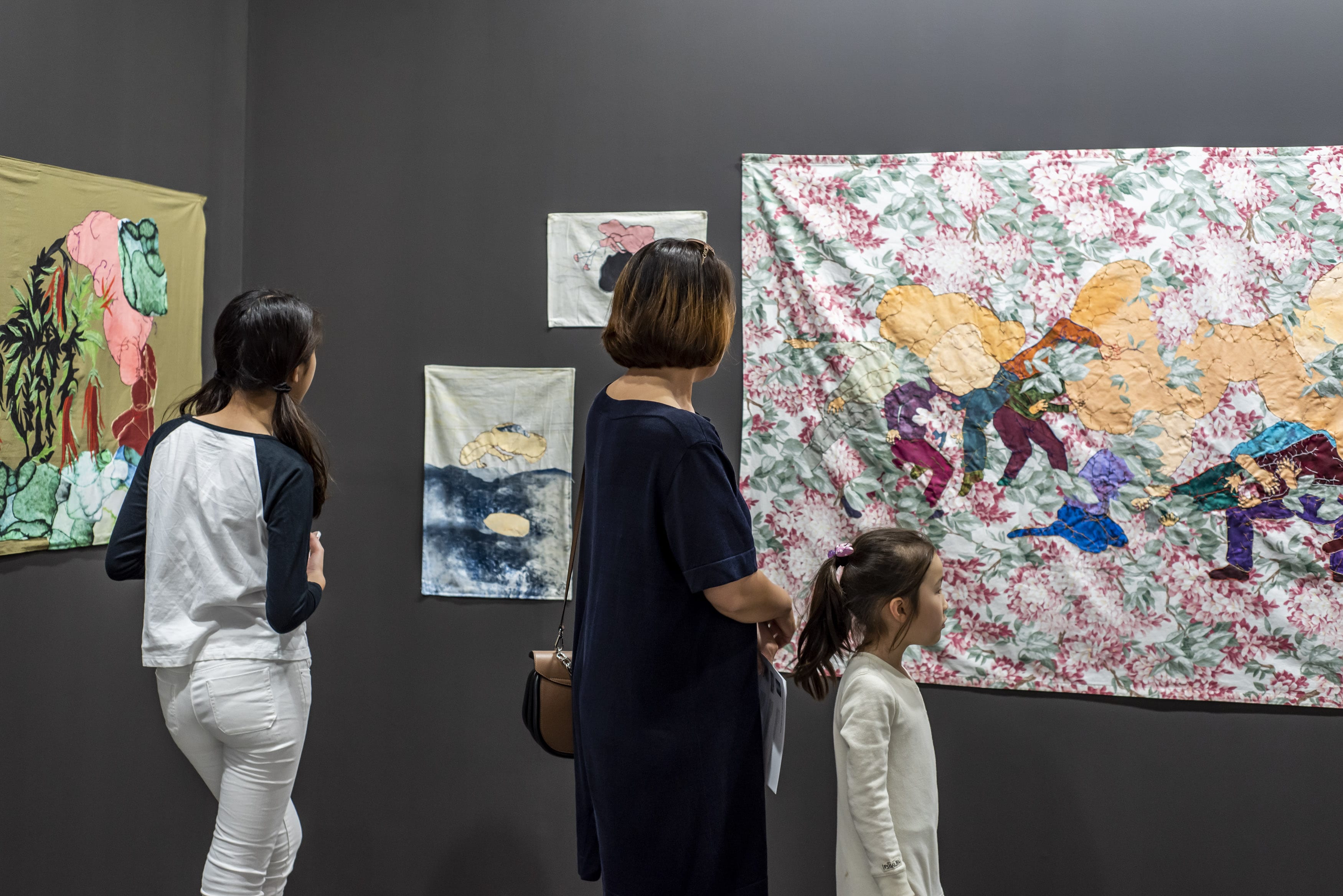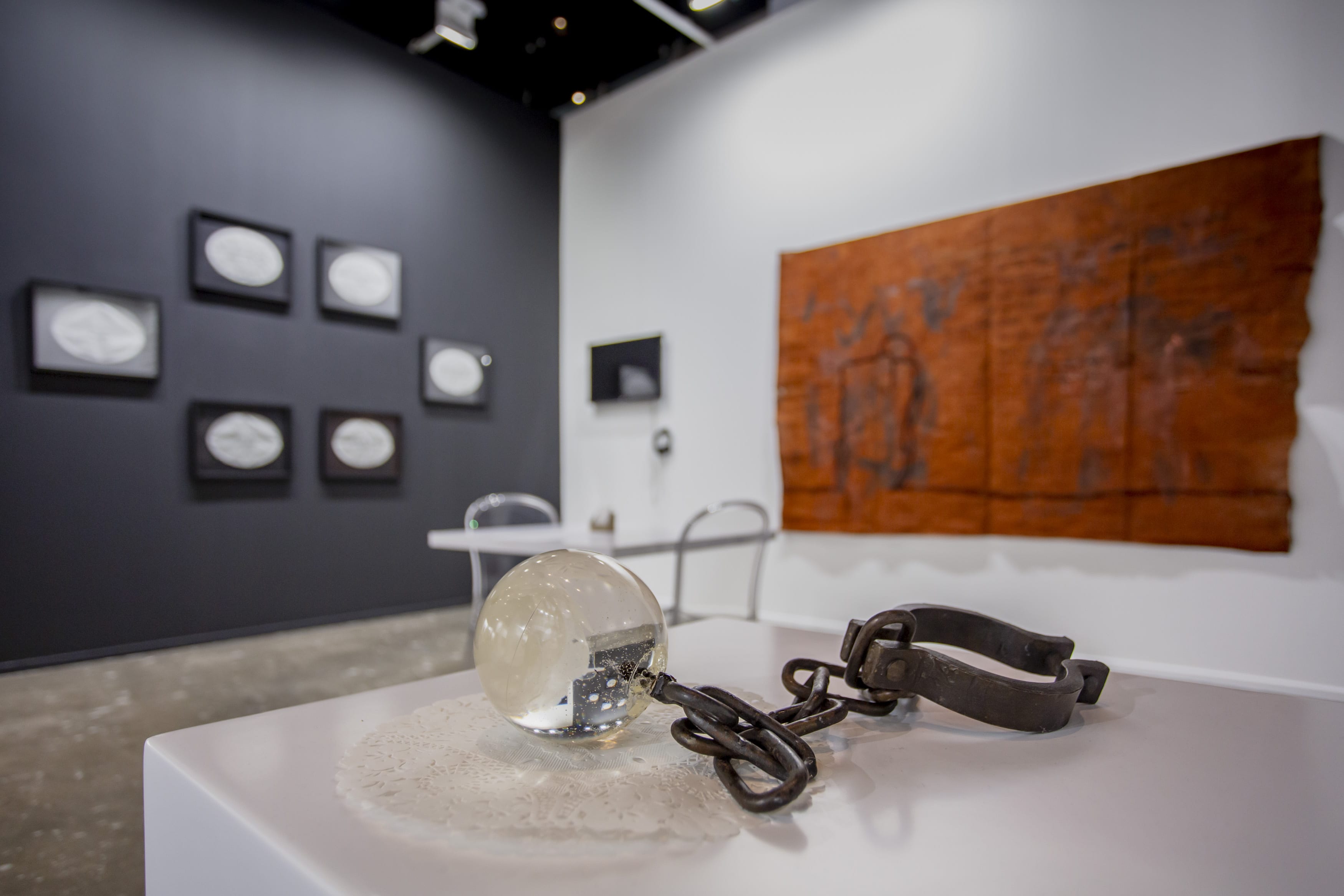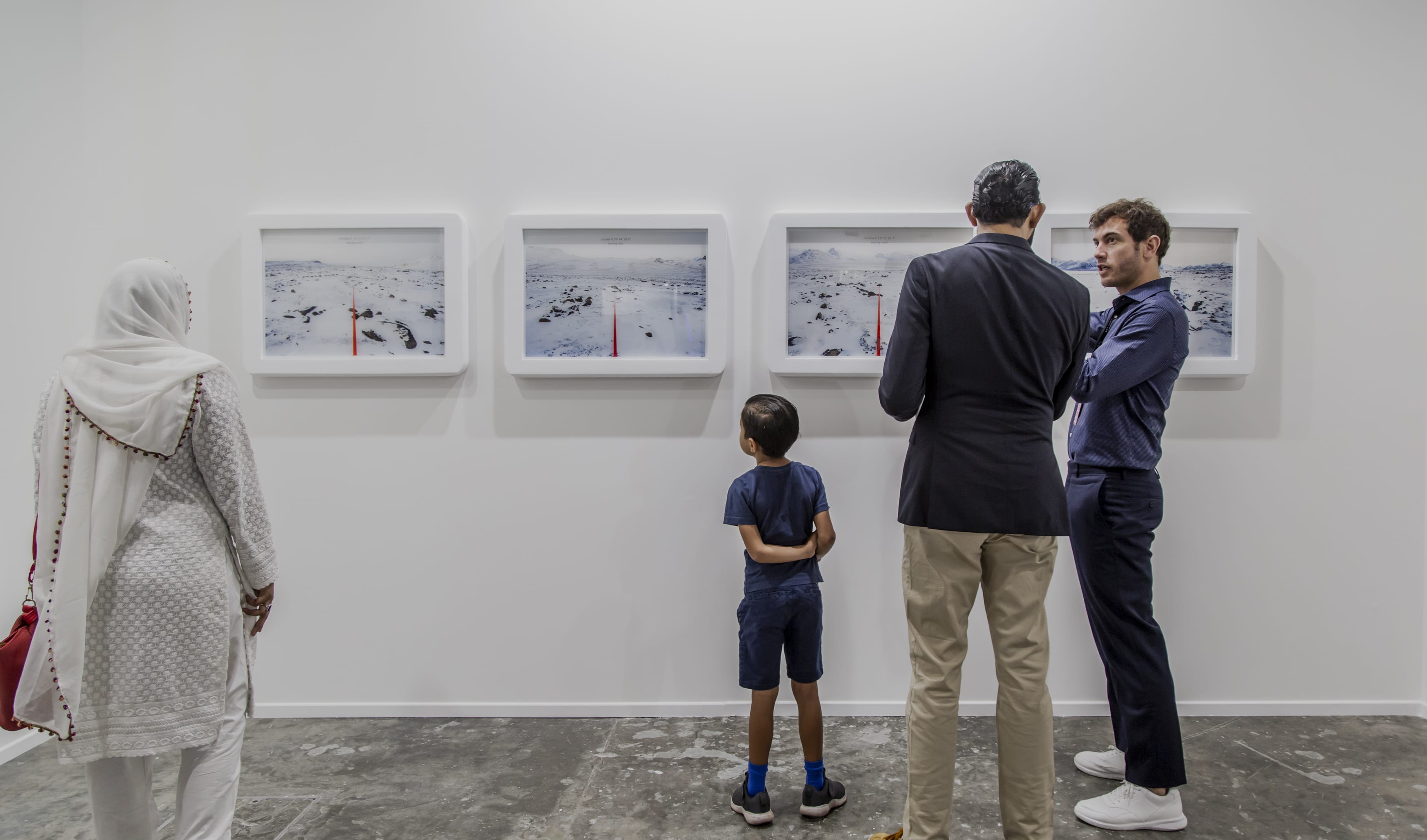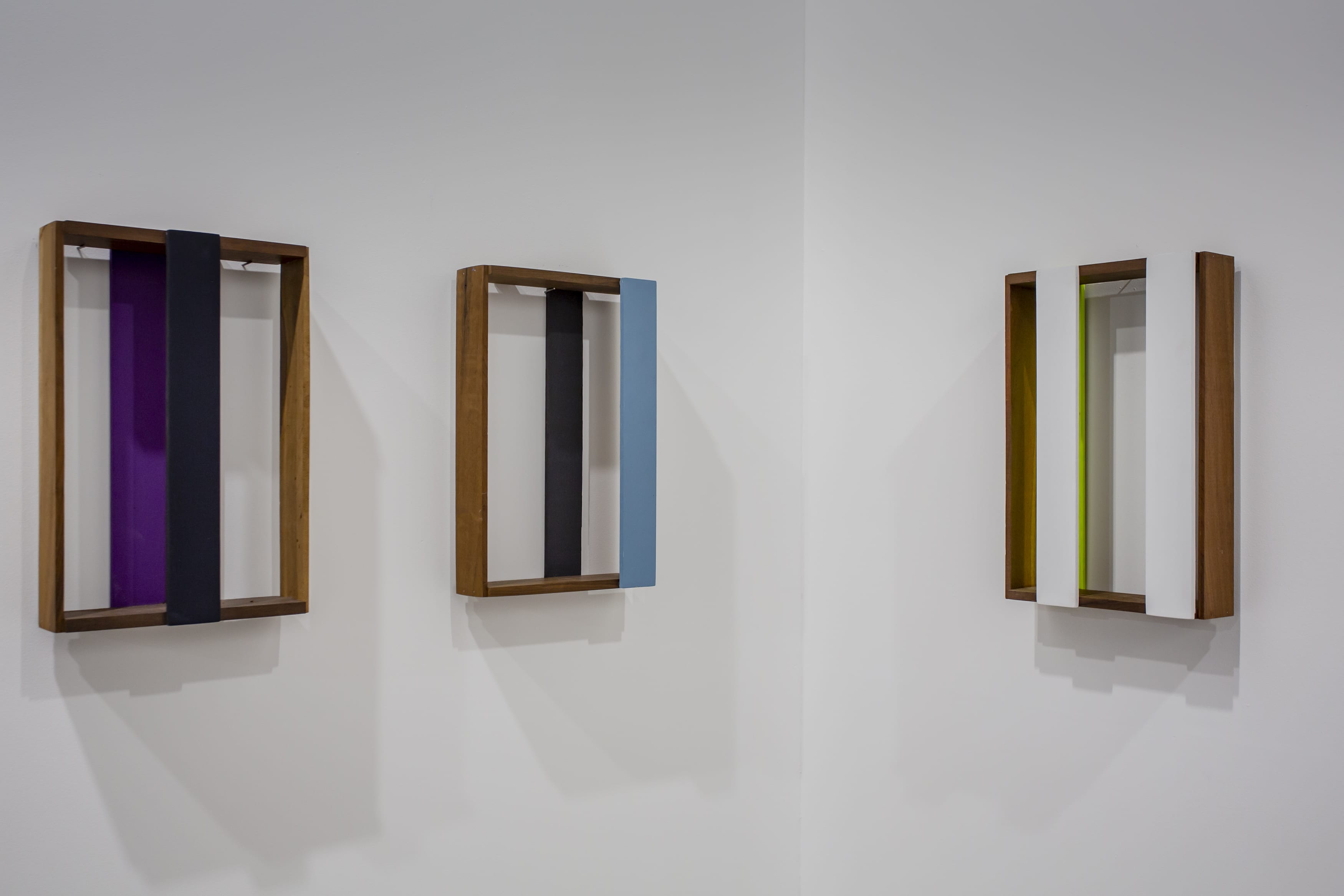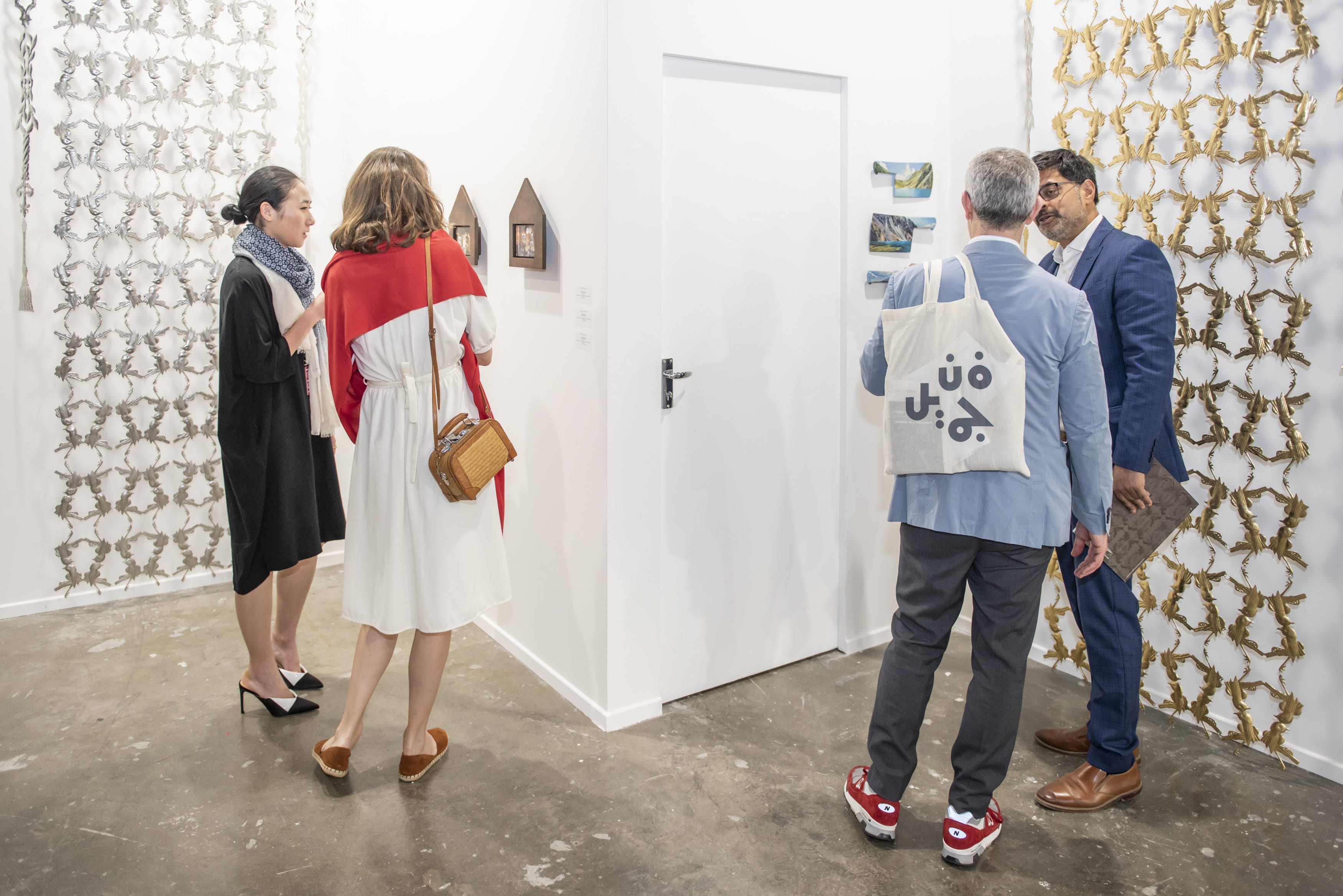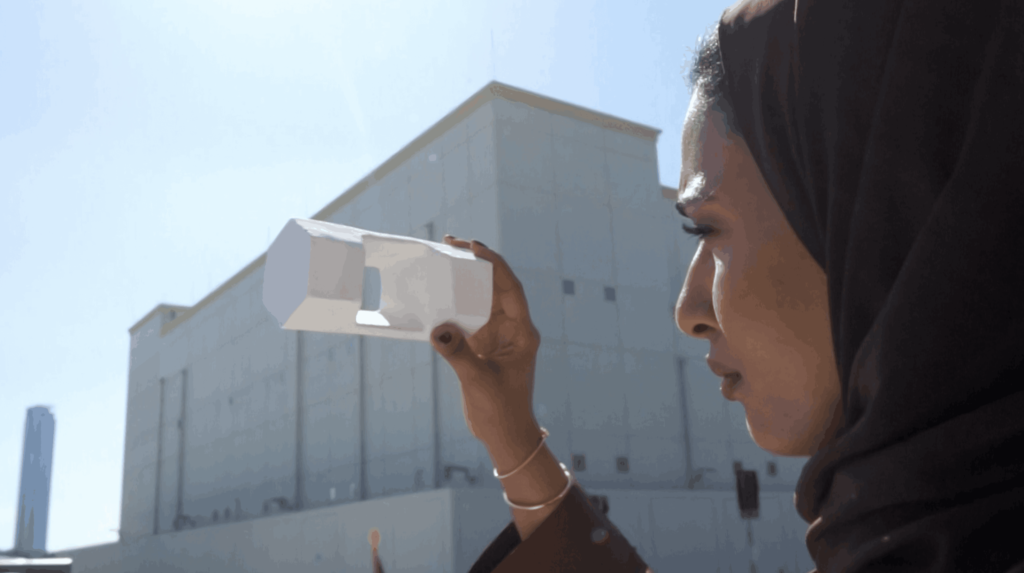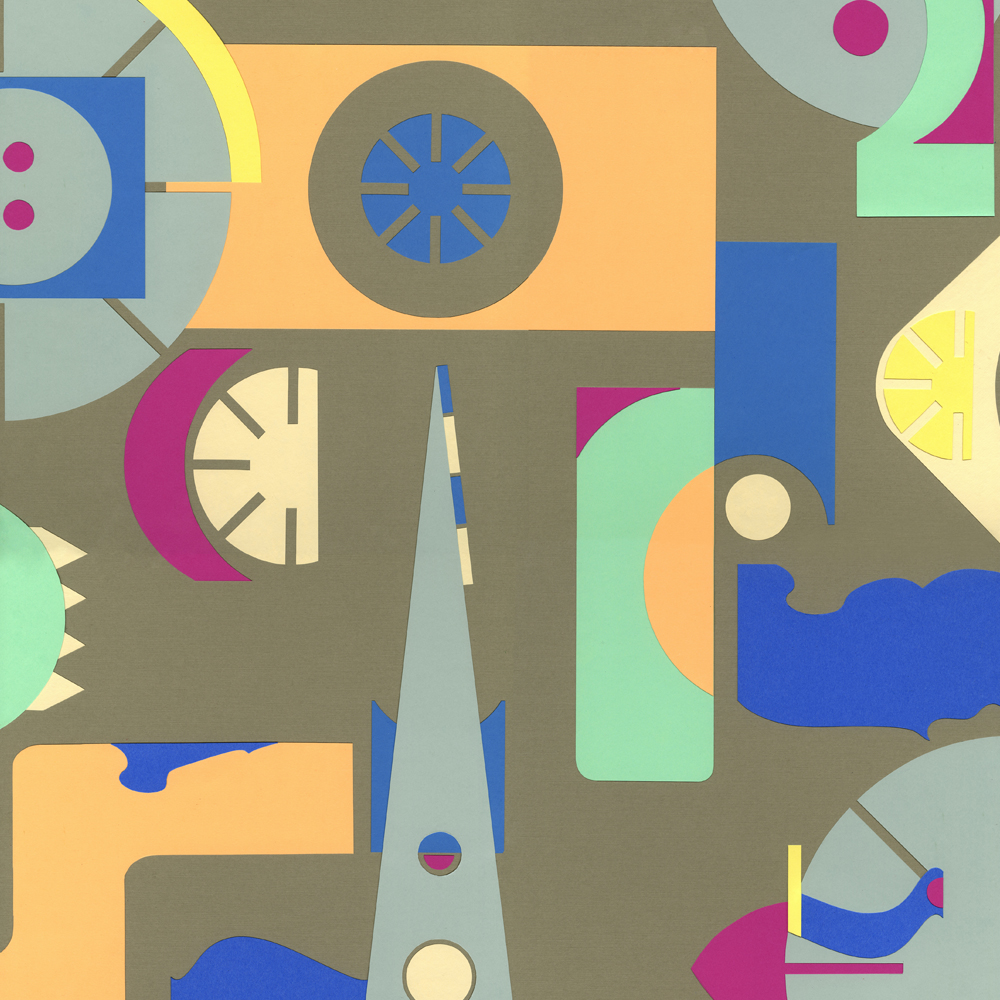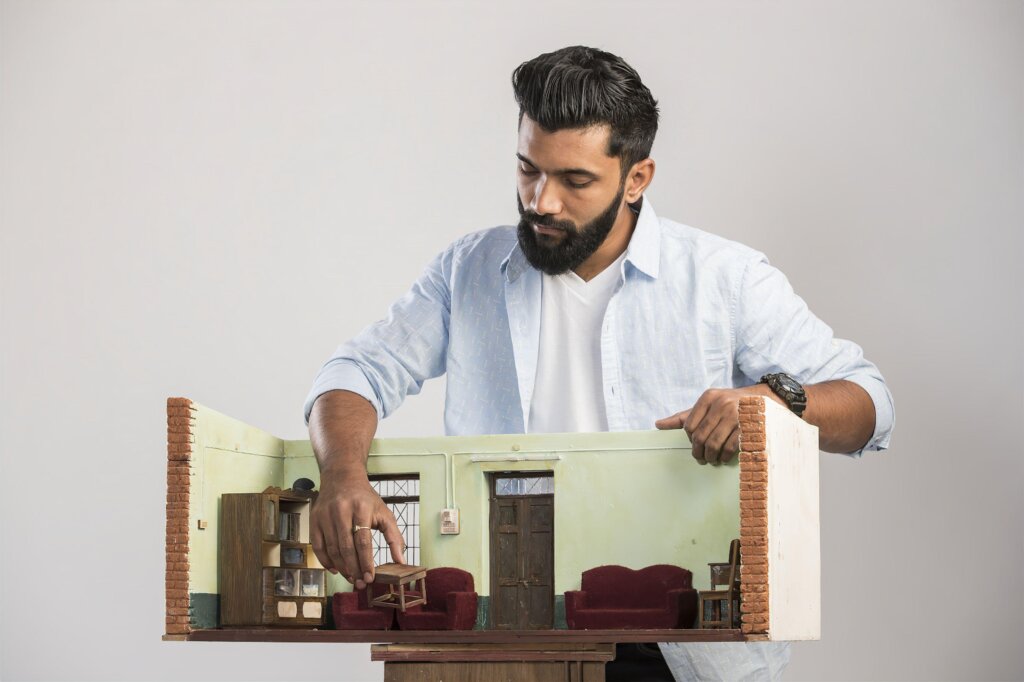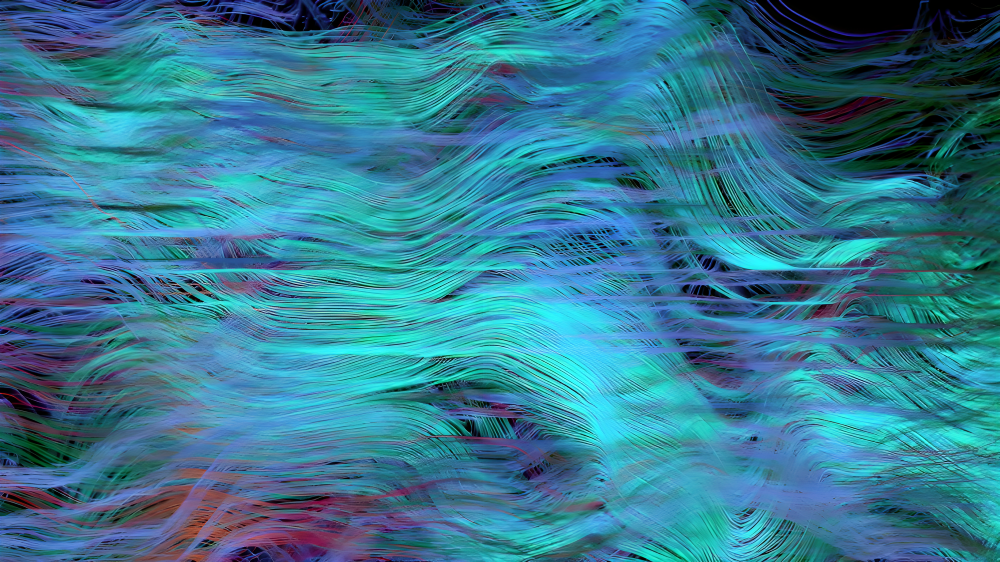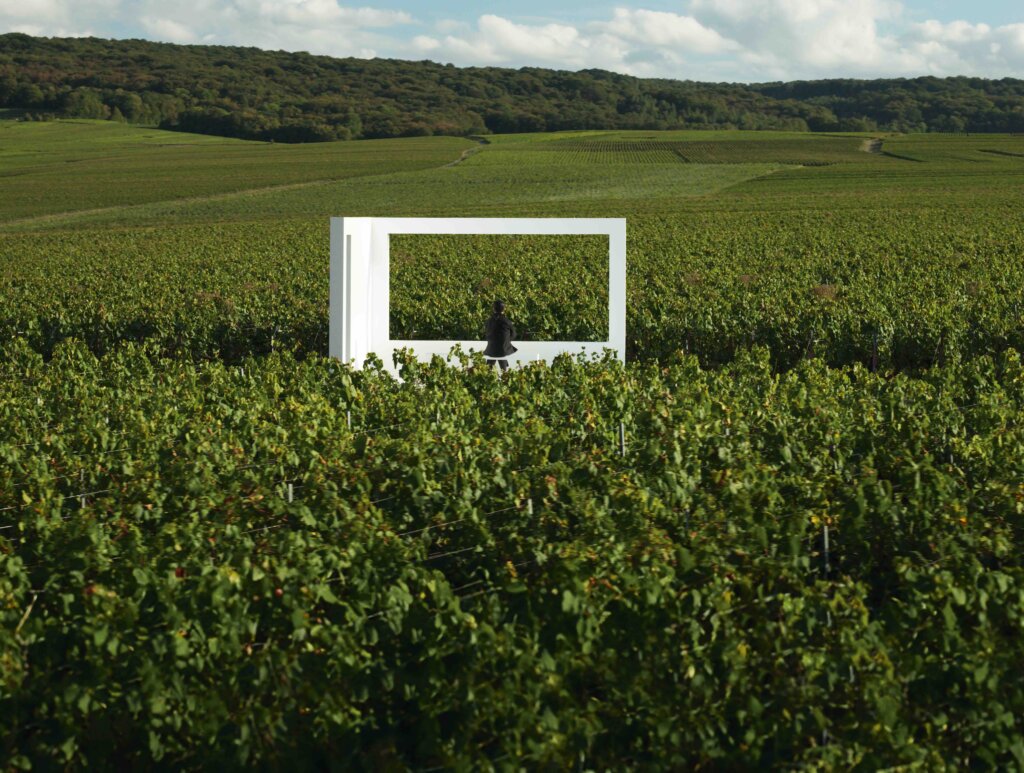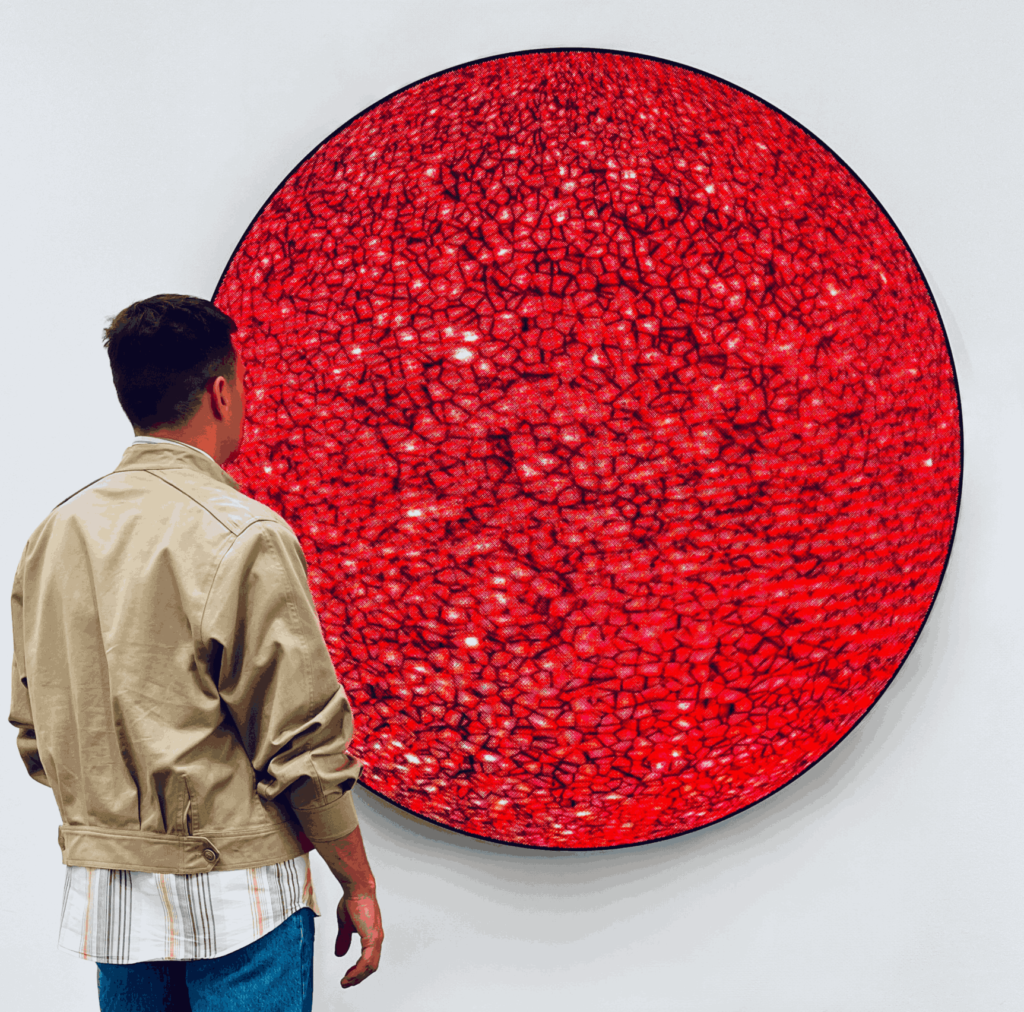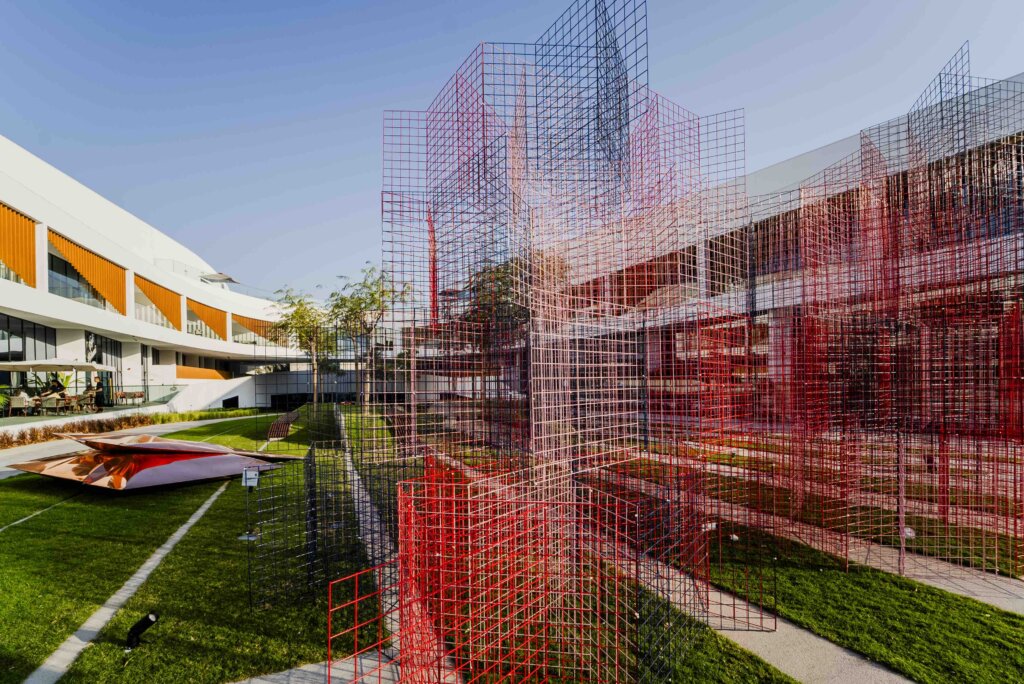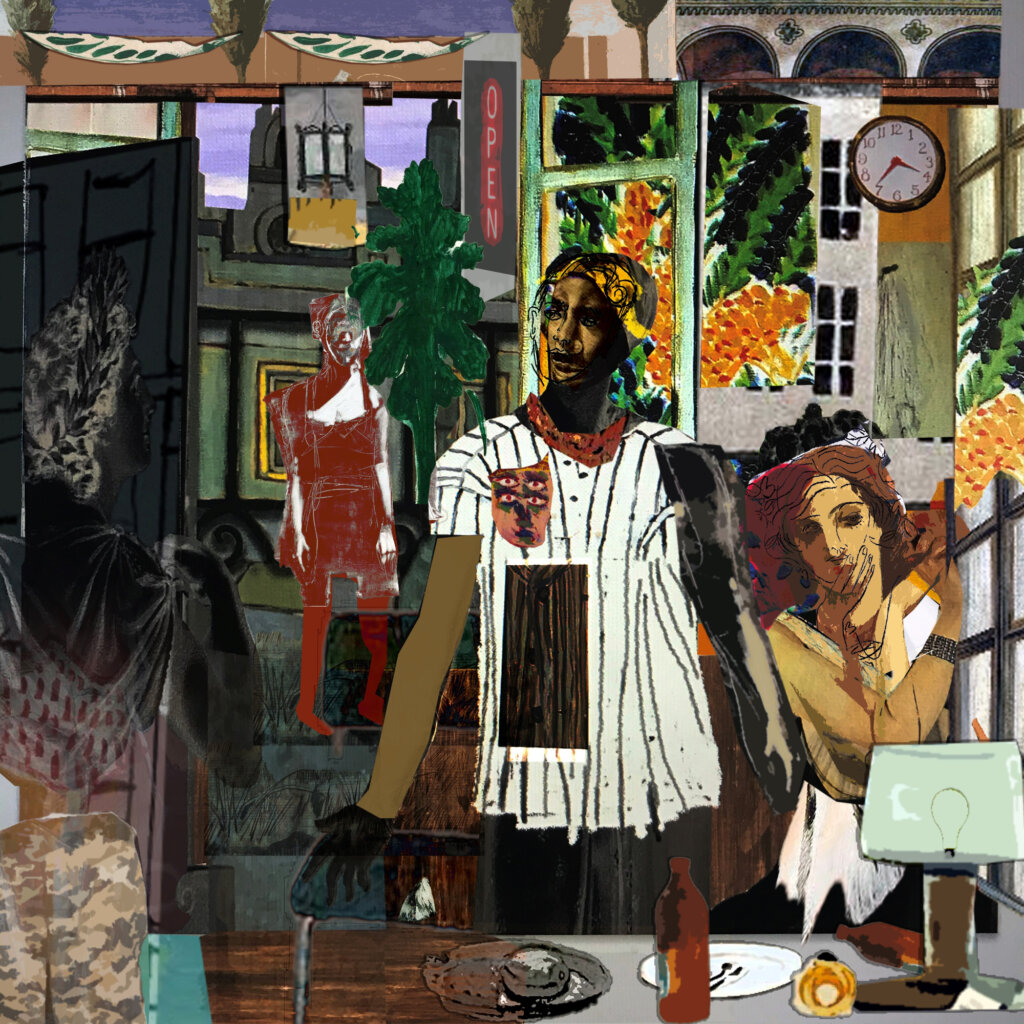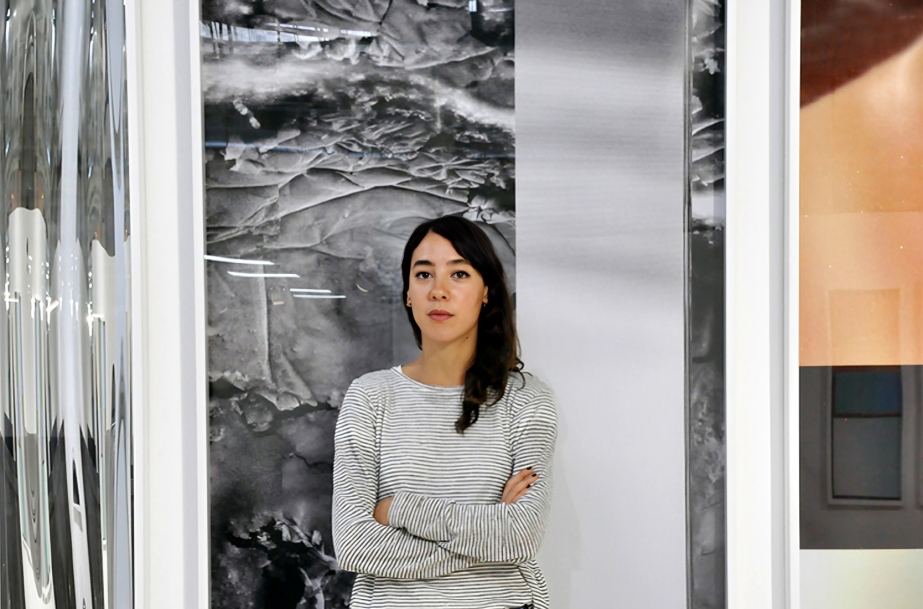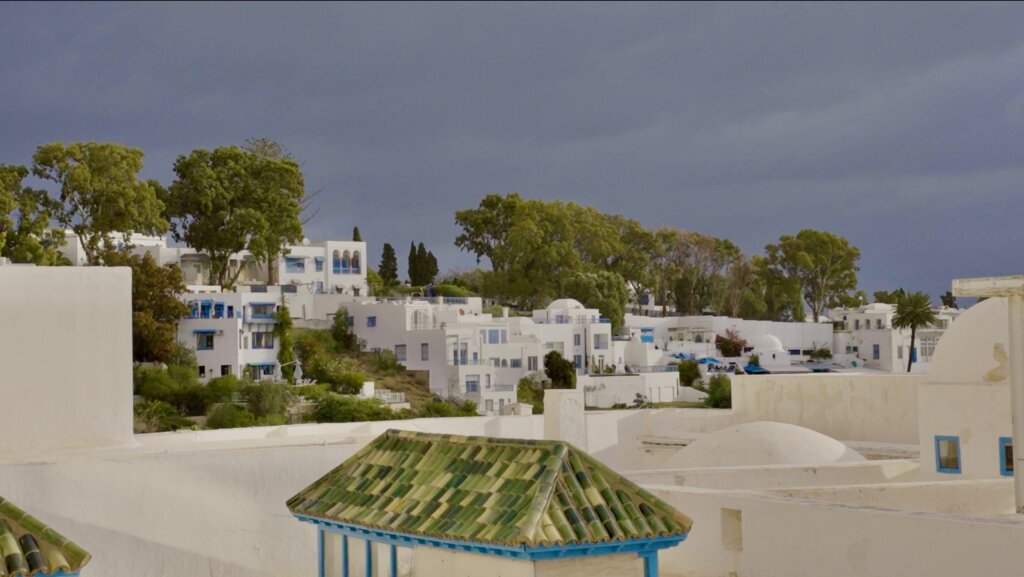This year saw the launch of Art Dubai’s new gallery section, Bawwaba. Taking its name from the Arabic word for ‘Gateway’, the debut edition was curated by French Cameroonian Élise Atangana and featured ten solo presentations from artists from, based in, and/or focused on projects about Latin America, the Middle East, Africa and Central and South Asia, which looked at the materiality of the object as traces of memories, exploring different perceptions of temporality as well as historical, political or intimate narratives.
Looking back at Bawwaba 2019, Atangana explained to Art Dubai her reasoning behind the ten artists she selected and why they should be on collectors’ radar:




